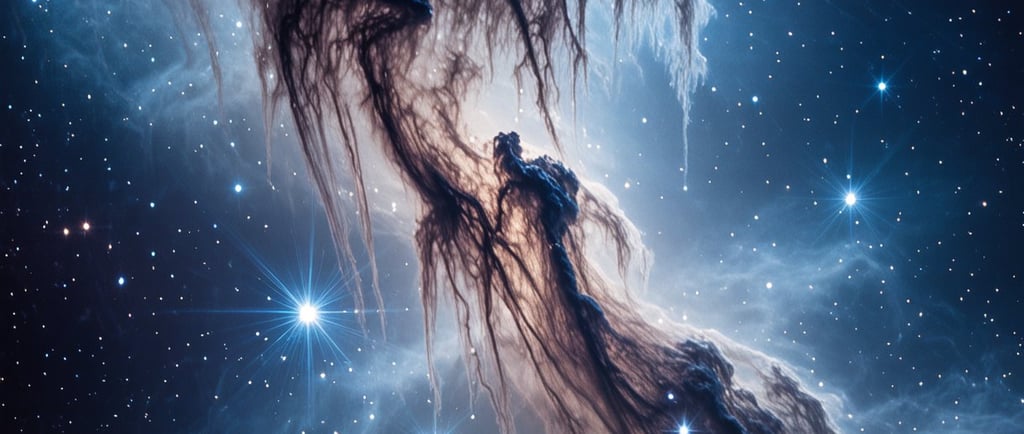The Frozen Stars in the Carina Nebula


Introduction to the Carina Nebula
The Carina Nebula, one of the most magnificent regions of the Milky Way, holds immense significance in the realm of astronomical research. As a vast star-forming area, it provides a unique glimpse into the processes involved in the birth of stars. Situated in the spiral arms of our galaxy, the Carina Nebula is not just a visual spectacle but also a rich resource for understanding stellar evolution.
The Stellar Nursery of the Carina Nebula
A key characteristic of the Carina Nebula is its role as a massive star-forming region. The nebula is teeming with gas and dust that serve as the raw material for star formation. Within these vast clouds, gravitational forces pull matter together, leading to the birth of new stars. The Carina Nebula is particularly notable for its high rate of massive star formation, which contributes to the dynamic environment and influences the surrounding space. By studying this region, astronomers gain insights into the complex interactions that drive star birth in our galaxy.
Eta Carinae: A Pivotal Star System
At the heart of the Carina Nebula lies the Eta Carinae star system, one of the most luminous and unstable systems known. This massive binary star system is of great interest to scientists, as its future is shrouded in mystery. Astronomers believe that Eta Carinae may ultimately end its life in a spectacular supernova explosion. Such an event would not only provide a wealth of data about stellar death but also illuminate the surrounding areas of the nebula, highlighting its importance in both current and future astronomical studies.
Conclusion
The Carina Nebula is a significant astronomical feature that reveals much about the processes of star formation in the Milky Way. Its vast array of young, massive stars and complex structures provide a splendid setting for scientific inquiry. As we continue to observe and study the Carina Nebula and its prominent star system, Eta Carinae, we not only enhance our understanding of stellar birth and death but also inspire future generations of astronomers and enthusiasts alike.
